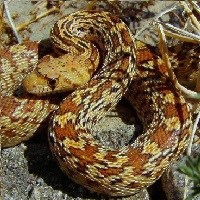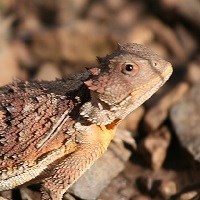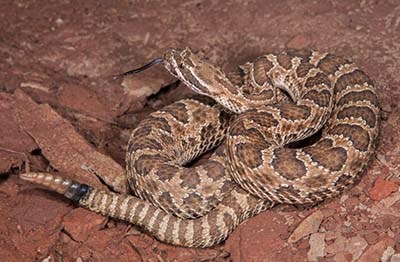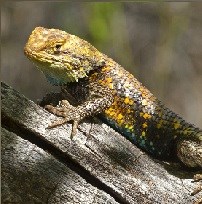
The Grand Canyon is home to 41 species of reptiles that live in every part of the park- from the pine forests of the rim to the Colorado River. The 22 snake, 18 lizard, and 1 tortoise species that live here are important and beautiful species that range from commonly seen collared lizards to the elusive desert tortoise. Reptiles have many important roles in the Grand Canyon. Many are prey for raptors and mammals, while lizards prey on insect populations, and snake species control rodent populations- preventing the spread of diseases like Bubonic Plague and Hantavirus. Many of the reptile species found inside the park are unique- the Grand Canyon rattlesnake (Crotalus organus abysus) is found nowhere else in the world. Please only view reptiles from a distance- Grand Canyon is home to 7 highly venomous reptiles: 6 species of Rattlesnake and the Gila Monster- the only venomous lizard in the United States. Small lizards and snakes can be easily harmed if they are handled. 
Gila Monster 
Gopher Snake 
Greater (Mountain) Short-horned Lizard 
The Grand Canyon is home to six species of rattlesnakes. Please observe these venomous predators from a distance.

Yellow-backed Spiny Lizard Quick Facts:
Southwestern U.S. Reptile Science |
Last updated: April 25, 2022
